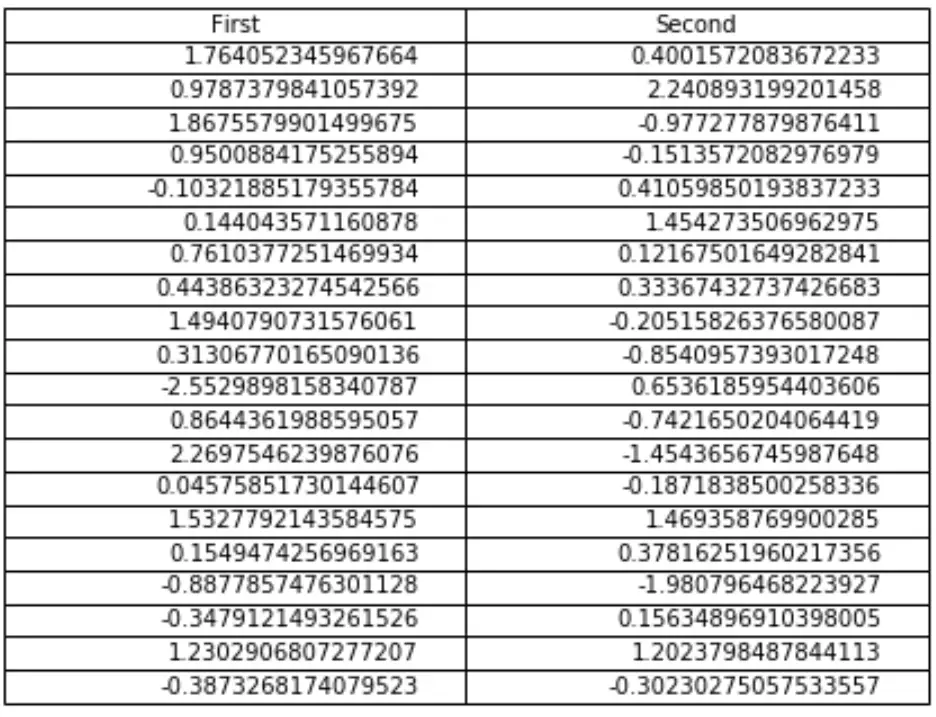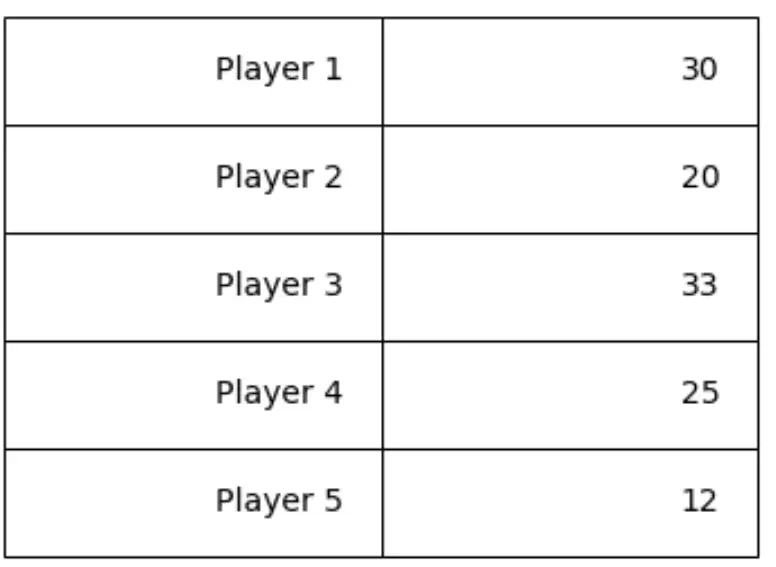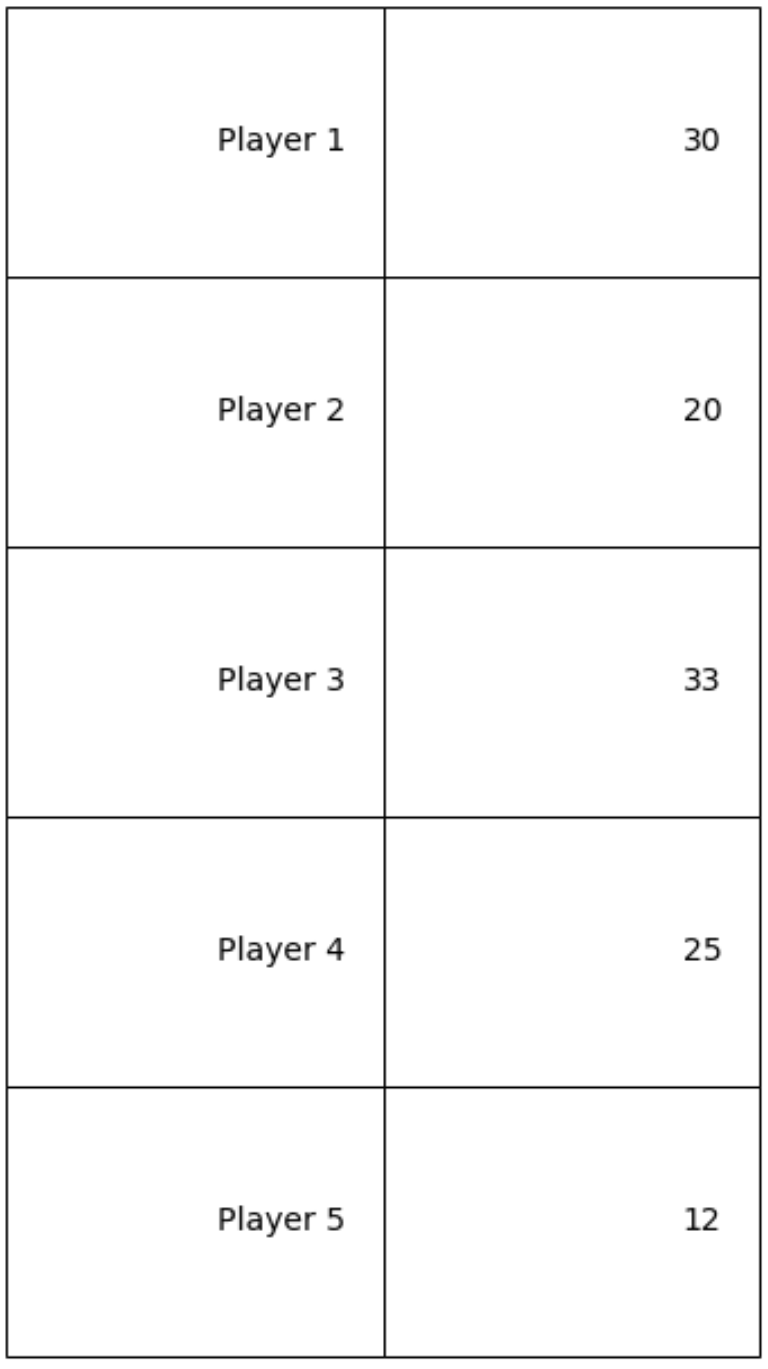Jak utworzyć tabelę za pomocą matplotlib
Do tworzenia tabel w Pythonie przy użyciu Matplotlib można użyć jednej z dwóch następujących metod:
Metoda 1: Utwórz tabelę na podstawie ramki DataFrame pand
#create pandas DataFrame df = pd.DataFrame(np. random . randn (20, 2), columns=[' First ', ' Second ']) #create table table = ax. table (cellText=df. values , colLabels=df. columns , loc=' center ')
Metoda 2: Utwórz tablicę z wartości niestandardowych
#create values for table table_data=[ ["Player 1", 30], ["Player 2", 20], ["Player 3", 33], ["Player 4", 25], ["Player 5", 12] ] #create table table = ax. table (cellText=table_data, loc=' center ')
W tym samouczku znajdują się przykłady wykorzystania tych metod w praktyce.
Przykład 1: Utwórz tabelę z ramki DataFrame pandy
Poniższy kod pokazuje, jak utworzyć tabelę w Matplotlib zawierającą wartości pandy DataFrame:
import numpy as np import pandas as pd import matplotlib.pyplot as plt #make this example reproducible n.p. random . seeds (0) #define figure and axes fig, ax = plt. subplots () #hide the axes fig.patch. set_visible (False) ax.axis(' off ') ax.axis(' tight ') #createdata df = pd.DataFrame(np. random . randn (20, 2), columns=[' First ', ' Second ']) #create table table = ax. table (cellText=df.values, colLabels=df.columns, loc=' center ') #display table fig. tight_layout () plt. show ()

Przykład 2: Utwórz tabelę na podstawie wartości niestandardowych
Poniższy kod pokazuje, jak utworzyć tabelę w Matplotlib zawierającą niestandardowe wartości:
import numpy as np import pandas as pd import matplotlib.pyplot as plt #define figure and axes fig, ax = plt. subplots () #create values for table table_data=[ ["Player 1", 30], ["Player 2", 20], ["Player 3", 33], ["Player 4", 25], ["Player 5", 12] ] #create table table = ax. table (cellText=table_data, loc=' center ') #modify table table. set_fontsize (14) table. scale (1.4) ax. axis (' off ') #displaytable plt. show ()

Zauważ, że table.scale(width,length) modyfikuje szerokość i długość tabeli. Na przykład moglibyśmy wydłużyć stół, zmieniając jego długość:
table. scale (1.10)

Dodatkowe zasoby
Jak dodać tekst do wykresów Matplotlib
Jak ustawić współczynnik proporcji w Matplotlib
Jak zmienić rozmiar czcionki legendy w Matplotlib